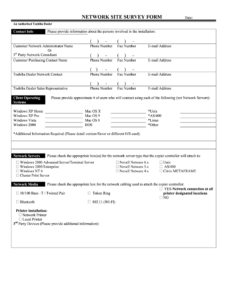Establishing an ITIL change management policy template is crucial for organizations seeking to implement a standardized approach to managing changes to their IT infrastructure, applications, and services. It provides a systematic framework for ensuring that changes are managed in a controlled, efficient, and risk-aware manner. An effective ITIL change management policy template can help organizations minimize disruption, maximize service availability, and ensure compliance with regulatory requirements.
The ITIL change management policy template should clearly define the roles and responsibilities of individuals involved in the change management process, such as the change manager, change advisory board (CAB), and change implementers. It should establish the types of changes that require formal approval, the required documentation, and the review and approval process. Additionally, the policy should outline the procedures for communicating changes to stakeholders, implementing changes, and verifying and documenting the successful implementation of changes.
Essential Elements of an ITIL Change Management Policy Template
An effective ITIL change management policy template should include the following essential elements:
- Roles and Responsibilities: Clearly define the roles and responsibilities of individuals involved in the change management process, including the change manager, CAB, and change implementers.
- Change Classification: Establish a system for classifying changes based on their impact, urgency, and risk level, to determine the level of review and approval required.
- Change Request Process: Outline the process for submitting change requests, including the required documentation and information, such as the change description, justification, and impact assessment.
- Review and Approval Process: Define the review and approval process for change requests, including the criteria for evaluating and approving changes, and the roles responsible for making approval decisions.
- Communication and Stakeholder Management: Establish procedures for communicating changes to stakeholders, including the affected users, IT staff, and management, to ensure they are informed and prepared for the upcoming changes.
- Change Implementation: Outline the procedures for implementing changes, including the steps to be taken, the resources required, and the timeline for implementation.
- Verification and Documentation: Specify the procedures for verifying the successful implementation of changes, including testing and validation activities, and documenting the changes made and their outcomes.
Benefits of Using an ITIL Change Management Policy Template
Implementing an ITIL change management policy template offers several benefits for organizations, including:
- Reduced Risk: A standardized change management process helps identify and mitigate risks associated with changes, minimizing the likelihood of disruptions or outages.
- Improved Service Availability: By ensuring that changes are properly planned, tested, and implemented, organizations can minimize downtime and maintain high levels of service availability.
- Increased Efficiency: A well-defined change management process streamlines the change implementation process, reducing the time and resources required to implement changes.
- Enhanced Compliance: An ITIL-aligned change management policy template helps organizations comply with industry standards and regulatory requirements related to change management.
- Better Decision-Making: A standardized change management process provides a structured approach for evaluating and approving changes, ensuring that decisions are based on objective criteria and sound judgment.
Conclusion
An ITIL change management policy template is a valuable tool for organizations seeking to manage changes to their IT infrastructure, applications, and services in a controlled and efficient manner. By establishing clear roles, responsibilities, and procedures, organizations can minimize risk, improve service availability, enhance efficiency, and ensure compliance with regulatory requirements. Additionally, using an ITIL change management policy template can help organizations make informed decisions about changes, prioritize resources effectively, and improve overall IT service management.
By implementing an ITIL change management policy template and adhering to its guidelines, organizations can create a culture of continuous improvement, where changes are managed effectively, and the impact on business operations is minimized. This leads to increased agility, improved service quality, and enhanced customer satisfaction.
FAQ
What is an ITIL change management policy template?
An ITIL change management policy template is a predefined framework that outlines the policies, procedures, and guidelines for managing changes to IT infrastructure, applications, and services. It provides a standardized approach to ensure that changes are managed in a controlled, efficient, and risk-aware manner.
Why is an ITIL change management policy template important?
An ITIL change management policy template is important because it helps organizations manage changes to their IT infrastructure, applications, and services in a consistent and structured manner. It defines the roles and responsibilities of individuals involved in the change management process, establishes a clear review and approval process, and provides guidance on communicating changes to stakeholders.
What are the benefits of using an ITIL change management policy template?
The benefits of using an ITIL change management policy template include reduced risk, improved service availability, increased efficiency, enhanced compliance, and better decision-making. By following a standardized change management process, organizations can minimize the impact of changes on their IT operations and ensure that changes are implemented smoothly and successfully.
